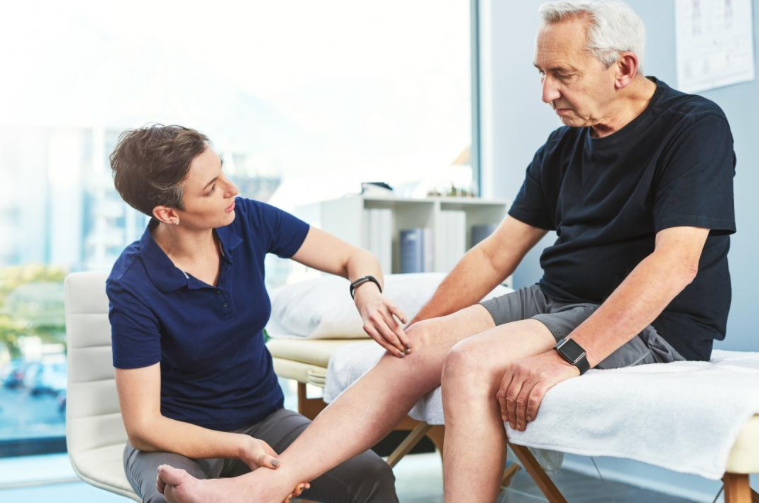5 Things A Exercise Physiologist Can Do To Help Arthritis In Your Knee
‘Degeneration of the knee’, ‘wear and tear’ and ‘bone on bone’ are common terms that people will use to describe knee arthritis. Knee arthritis may present as pain and stiffness in the knee joint that occurs generally in the morning, after sitting for a long period of time or when you are doing exercises such as walking or kneeling, it may also include pain or swelling at the joint. This can be quite debilitating, as it often means that movements that require bending the knee can be painful, such as cleaning the house, gardening or bending down to play with the grand children.
Knee arthritis is caused by cartilage loss in the joint space, which leads to remodelling of the bones and weakness in the surrounding muscles. It is a very common condition and its prevalence increases with age, occurring more in women than in men. Risk factors for development include obesity, prior knee injury or surgery and excessive bending and lifting motions with poor technique. Although surgery is a common form of treatment, there are much less invasive ways to treat and live with your arthritis without having surgery.
Danielle, our Exercise Physiologist, explains 5 things that you can do to help improve arthritis and decrease knee related pain:
1. Exercise!
Whilst it probably doesn’t seem like something that you want to do at the time, the best way to improve your knee pain is to strengthen the muscles around it. Increasing muscle strength is going to provide support around the knee joint for you to be able to do movements safely and without pain. Strength training doesn’t mean that you’re going to be lifting massive weights and putting a lot of stress through your body, instead it means that we’ll be working within pain free ranges and finding exercises that don’t leave you feeling worse than when you came in. We will also aim to strengthen muscles in other body parts to help support the knee and take the stress off the joint.
2. Give you management strategies for at home!
Some movements may be painful to complete, however there are ways that you are able to move that will protect the joint and avoid pain. This may involve using larger body parts to alter weight distribution during tasks or changing the way an activity is done to avoid pain.
3. Help you to understand pain and degeneration!
Degeneration is a scary word, but occurs in nearly every person and is believed to start as early as in your 20’s. However, this does not mean that every person will experience pain from their degeneration. Pain is a natural response that tells your body when it is in danger, hence why there may be pain when you are bending due to the loss of cartilage. This should be listened to, but also shouldn’t stop you from doing activities that you enjoy. If you enjoy gardening but get pain after kneeling for an hour, take plenty of rests in between to avoid the build of pain so that you can keep doing activities you love.
4. Teach you about pacing strategies!
Pacing strategies involve including rest periods into daily activities to avoid painful symptoms and avoiding the activity all together. Pacing strategies work the best when they are pre-planned – that is knowing how long it takes for a task to become painful and having a rest before this occurs, rather than waiting for the onset of pain to rest. This also means that if you’re having a ‘good day’ where there is no pain, still stick to the pacing schedule and not over-doing a painful activity.
5. Help you prepare for surgery to make recovery easier!
I did previously say that surgery is not the only option for treatment – however you may prefer to get surgery or have your doctor tell you that this is the only option. In which case, doing ‘pre-hab’ and working with an Exercise Physiologist prior to having surgery to increase the strength in the surrounding muscles will help your rehabilitation post-surgery. Patients who have increased strength in their knee often find that their recovery time is shorter and they are able to return to full function.

